Art & Exhibitions
In a New Van Gogh Exhibition, Seminal Artworks Offer Fresh Insights Into the Artist’s Worldview
This landmark exhibition at the National Gallery in London offers stories behind the friends and scenery that surrounded the artist.
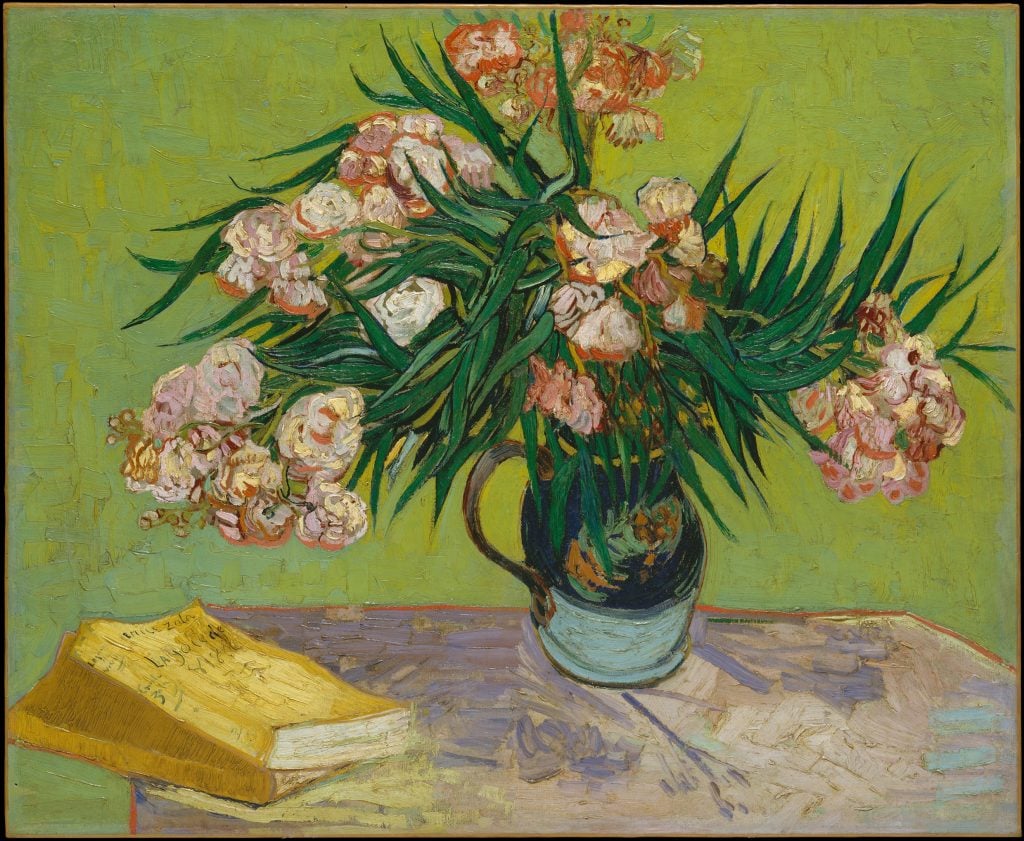
This landmark exhibition at the National Gallery in London offers stories behind the friends and scenery that surrounded the artist.

Jo Lawson-Tancred

You don’t have to be an art history buff to recognize the work of Vincent van Gogh. Many of his most-loved motifs have been reproduced so many times that they are instantly recognizable: Who could mistake the swirling sky from The Starry Night or the mass of bedraggled yellow petals in his Sunflowers series?
In the century since they were acquired in 1924, two of van Gogh’s archetypal paintings have been among the crown jewels of the collection at the National Gallery in London—those most famous sunflowers in a vase as well as Van Gogh’s Chair (1888) have attracted visitors from across the globe.
In celebration of its 200th anniversary, the U.K. institution is further expanding our love and understanding of the artist with a significant new exhibition: “Van Gogh: Poets and Lovers,” on view through January 19, 2025. The title refers to the figures that Van Gogh portrayed, but is also inspired by the unique way in which he perceived the world and reimagined it as part of his own artistic universe.
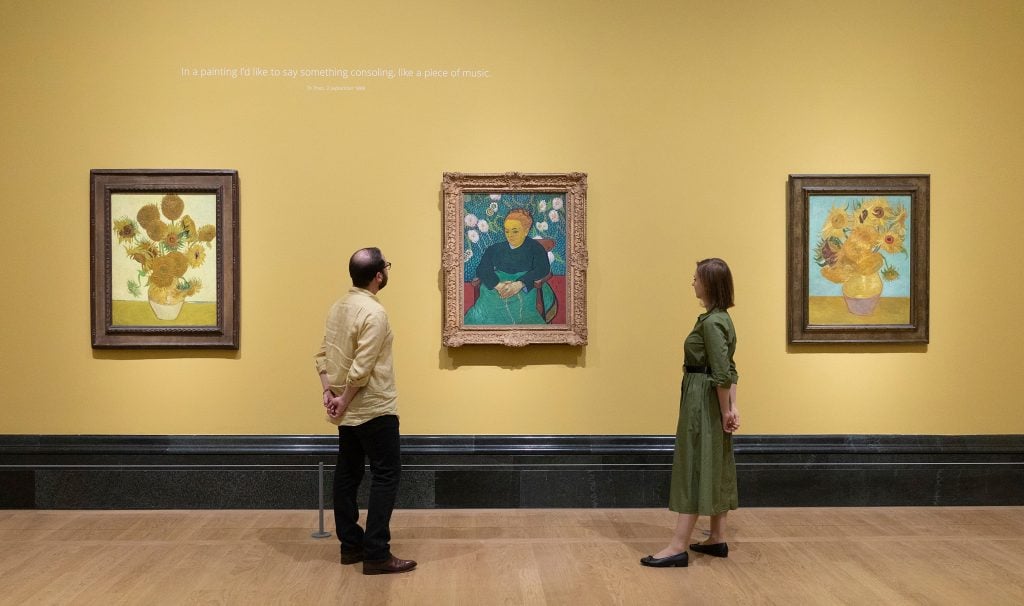
Installation view of “Van Gogh: Poets and Lovers” at the National Gallery in London. Photo: © The National Gallery, London.
Over 50 works have been loaned, including prize pieces from the Van Gogh Museum in Amsterdam and the Musée d’Orsay in Paris. These canvases will be displayed alongside the artist’s drawings, providing additional insight into his vision and process.
We took a look at some of the show’s highlights.
The Sower (1888)
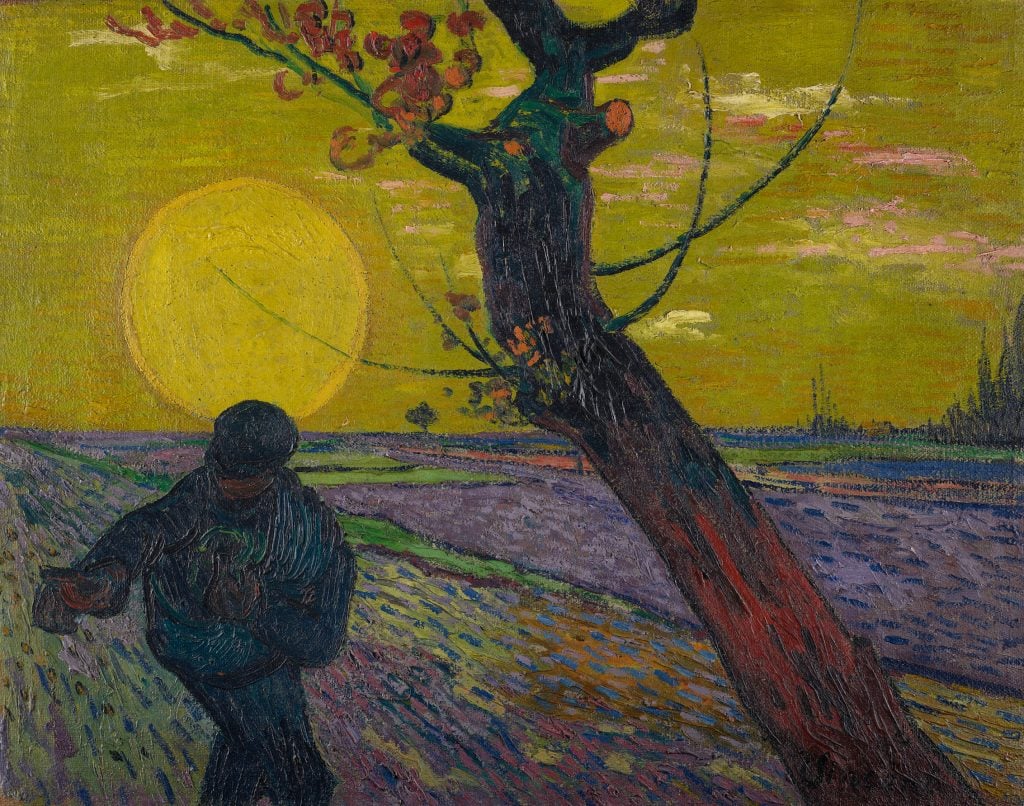
Vincent Van Gogh, The Sower (1888). Photo: © Kunsthaus Zürich.
An agricultural laborer scattering seeds in the cool light of dusk was a subject that Van Gogh returned to repeatedly, creating over 30 drawings and paintings that featured the sower, a biblical figure. These works tended to be constructed using surreal colors like green or orange skies and purple plots of land that are emotionally evocative rather than closely reflecting reality. This mode of expression may have been influenced by fellow Post-Impressionist painter Paul Gauguin who, in 1888, was also living in the southern French town of Arles.
The Lover (Portrait of Lieutenant Milliet) (1888)
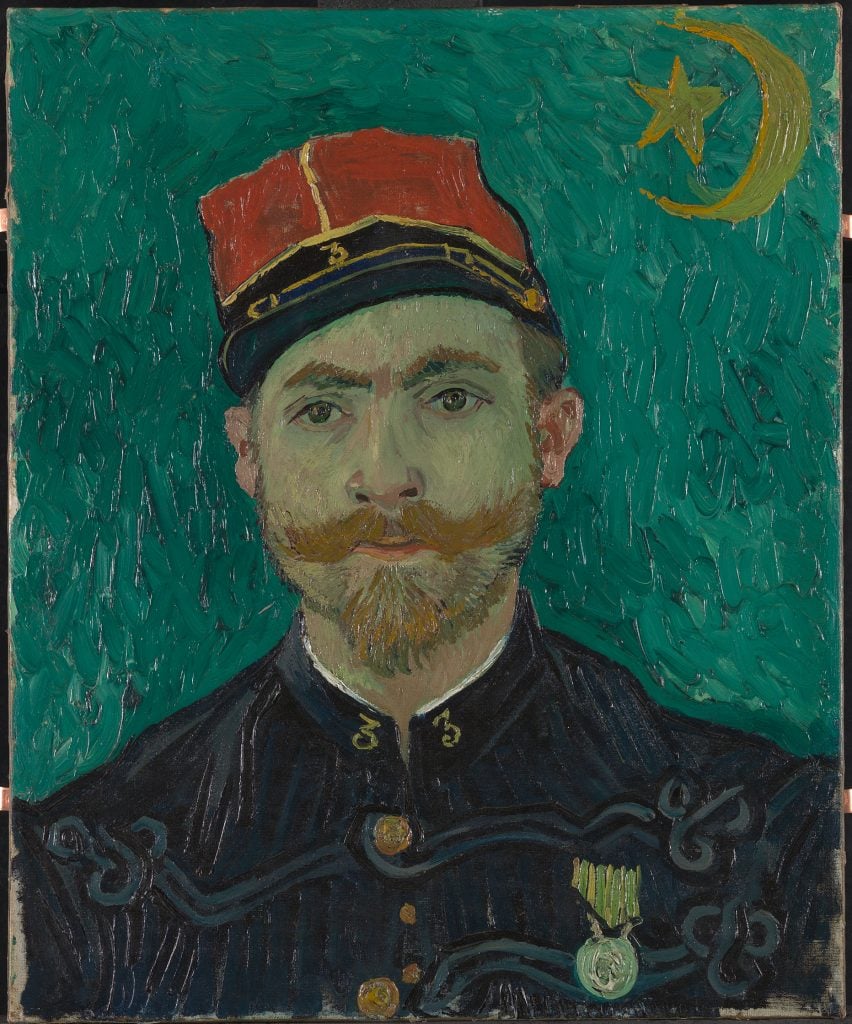
Vincent van Gogh, The Lover (Portrait of Lieutenant Milliet) (1888). Photo: Rik Klein Gotink, © Collection Kröller-Müller Museum, Otterlo, The Netherlands.
When Van Gogh was living in Arles, France, he enjoyed a friendship with Paul-Eugène Milliet, a second lieutenant of the French army to whom he gave drawing lessons. In a letter to his brother Theo, the artist described how he admired the officer’s way with women, a characteristic also invoked by the portrait’s title. “Milliet’s lucky, he has all the Arlésiennes he wants, but there you are, he can’t paint them, and if he was a painter he wouldn’t have any,” he wrote.
Landscape near the Abbey of Montmajour (1888)
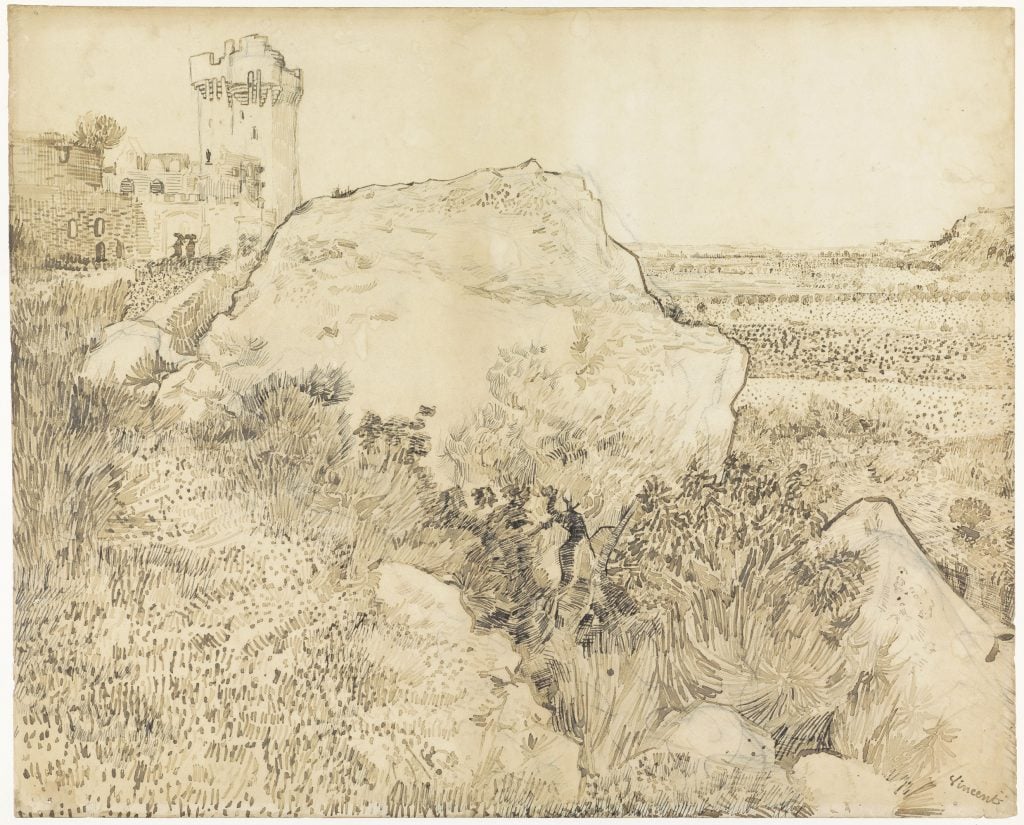
Vincent van Gogh, Landscape near the Abbey of Montmajour (1888). Photo: © Rijksmuseum, Amsterdam.
Montmajour Abbey was once a Benedictine monastery built between the 10th and 19th centuries. Van Gogh visited often, repeatedly drawing and painting the ruin amid a rugged landscape. In this example, a protruding rock and surrounding wild grasslands take a position of prominence in the foreground, leaving us to spy the abbey in the distance. Though unusual, this perspective is truthful to the ways in which we encounter the world around us.
The Bedroom (1889)
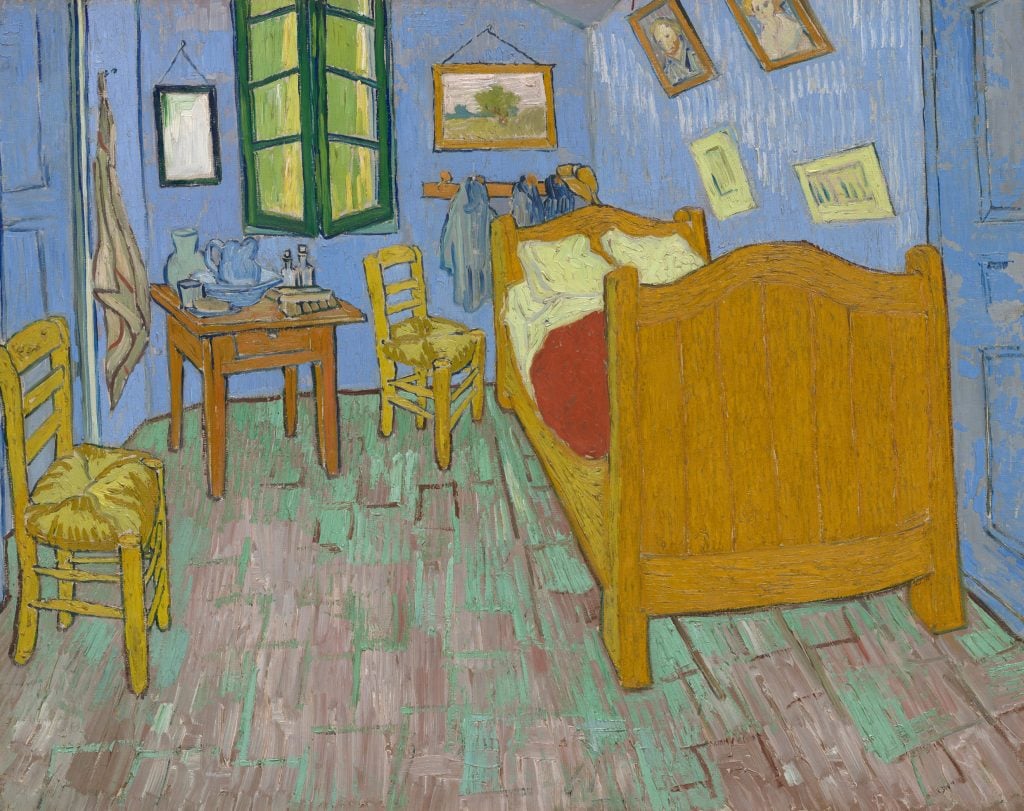
Vincent van Gogh, The Bedroom (1889). Photo: © The Art Institute of Chicago.
While living in Arles, Van Gogh rented four rooms in a building that he called “the yellow house.” He painted both its exterior and this interior view of his bedroom with green shutters, and framed pictures hanging on the wall. Researchers have recently determined, however, that the blue walls are in fact the result of partial discoloration. Originally, the walls were purple, as also referenced in a letter to Theo, in which Van Gogh described a simple but multi-chromatic composition “à la Seurat.”
“In flat tints, but coarsely brushed in full impasto, the walls pale lilac, the floor in a broken and faded red, the chairs and the bed chrome yellow, the pillows and the sheet very pale lemon green, the bedspread blood-red, the dressing-table orange, the washbasin blue, the window green,” he said. “I had wished to express utter repose with all these very different tones.”
The artist also explained to his brother that his decision to flatten the room rather than apply the principles of perspective was intended to recreate the effect of a Japanese print. He had a sizable collection of these works that he often referred to.
The Poet (Portrait of Eugène Boch) (1888)
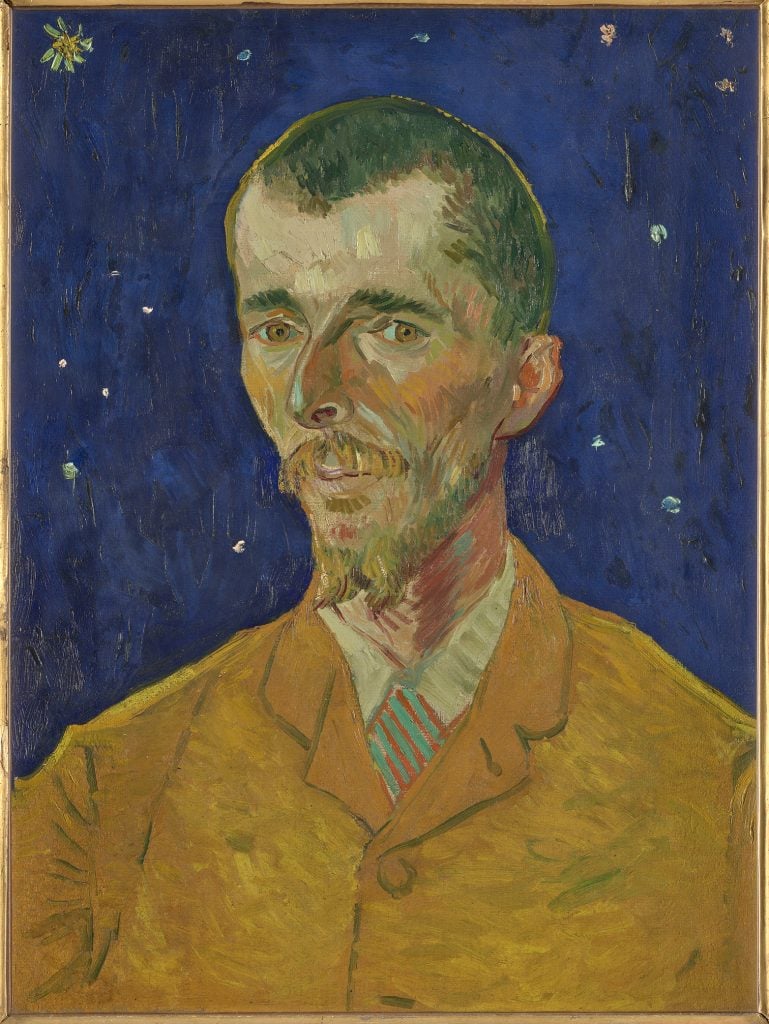
Vincent van Gogh, The Poet (Portrait of Eugène Boch) (1888). Photo: © Photo © RMN-Grand Palais (musée d’Orsay) / Adrien Didierjean.
While living in Arles, van Gogh befriended another painter from Belgium, Eugène Boch. He was immediately drawn to “his distinctive face, like a razor blade, and his green eyes” and was inspired to try out a semi-fantastical portrait concept. It would reflect something of the mind of an artist or a poet, “a man who dreams great dreams, who works like the nightingale sings, because it is his nature to do so.”
“Behind his head, instead of painting the ordinary wall of this shabby apartment, I will paint infinity,” van Gogh decided, in a letter to Theo. “Through this simple combination of the bright head against this rich, blue background, I will obtain a mysterious effect, like a star in the depths of an azure sky”. Van Gogh christened the portrait The Poet and hung it on his bedroom wall.
“Van Gogh: Poets and Lovers” is on view at the National Gallery in London until January 19, 2025.